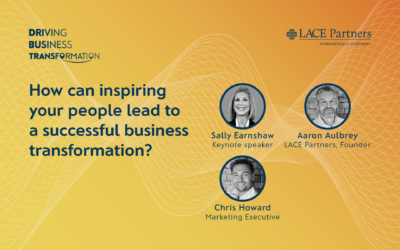 To round off the year, we’ve been focusing on the trends, topics and discussion points that have crystallised around our One Big Thing White Paper. The paper covers the myriad topics swirling around for Chief People Officers (CPOs) as key focus areas for 2023 and into 2024. Here’s a look at what we learned at our networking dinner at the beginning of December.
To round off the year, we’ve been focusing on the trends, topics and discussion points that have crystallised around our One Big Thing White Paper. The paper covers the myriad topics swirling around for Chief People Officers (CPOs) as key focus areas for 2023 and into 2024. Here’s a look at what we learned at our networking dinner at the beginning of December.
We met with senior HR professionals to chat all things talent– attraction, retention, attrition -all of the above. And to add even more value to the discussion, we brought in industry speaker and author Mervyn Dinnen to talk about his book Digital Talent: Find, Recruit and Retain the People your Business Needs in a World of Digital Transformation’, which was co-authored by Matt Alder.
Mervyn shared his thoughts on the changes that we’re seeing within recruitment/hiring and looked at the future of attracting talent in an increasingly digital world. How’s it changed? What are the downsides – and the upsides? And how can CPOs and HR leaders adapt to the new forces driving digital talent?
Consistency is key
A major challenge facing many businesses is how best to maintain consistency across the entire talent acquisition process. By this, we mean right from the initial application and then on through the whole joining, onboarding, performance management and offboarding process – the entire employee lifecycle.
If each of these is managed and controlled by a different department, for example, where does that leave the candidate/employee/leaver? Figuring out a strategy that covers the various stages of the process in a consistent and useful way is a key priority for businesses going into 2023. This is, naturally, something that can and should be co-ordinated and led by HR leaders.
What do candidates need?
The goal should be to create a positive experience for the candidate. How? By ensuring that they feel they are getting something from the process. If they are furnished with something that adequately manages their expectations then they will come away from the process having learned something – even if they don’t get the outcome they want. This applies, of course, for internal as well as external candidates.
Building on the idea of focusing on what candidates need, managers should monitor the state of the internal perception of moving roles. Frequently, there appears to be a perception from within the business that employees would not be given opportunities in different roles.
As a recruiter ask yourself whether employees are feeling pigeonholed and therefore stuck in your business – is this why they aren’t applying for internal positions? What can you do to change this?
Increase transparency surrounding tech skills
The question of whether managers are open enough about the technology they’re using to find talent remains important. Businesses must ensure their talent acquisition managers are using tech in the best way to search internally as well as externally.
For example, there are specific skills surrounding the strategic use of applicant tracking systems (ATS) internally as opposed to externally. The need for these skills at leadership level needs to be addressed so that internal business units are properly assessed for open positions.
Find ways to boost internal mobility
Tying much of this together is the question of which team is responsible for internal mobility. The feeling from some delegates is that internal Talent Acquisition teams are hyper focused on results. Rather than building the internal skills tech and matching abilities necessary to communicate with potential candidates internally, they’re immediately using quicker, simpler ways to fill positions.
For example, filling an important position is far faster if you use LinkedIn or another digital recruitment site. The process of communicating at the right level with the right people across the business to recruit internally is far more complex and time consuming. But that doesn’t mean it should become part of the mix.
Should there be time and training built in for these TA managers to understand the strength of internal communication and recruitment from within?
What exactly is HR’s role here?
HR’s job is to help ensure that line managers are good at finding talent. Are individuals within business units – whether line managers or anyone in leadership role – given enough support and empowerment to make the decisions that could transform a business?
A delegate describing his business within the digital sector pointed out that individuals that are given autonomy to make instant hiring decisions can cut out the formalised process and slash the speed of hiring new talent.
The question led us to discuss whether many organisations are aware of the potential of individuals who have the ability to spot talent and using this across the business. Most organisations rely on individual line managers to recruit for their team, but there must be milage in creating a position for a hiring specialist and utilising this talent to recruit across the wider business.
Over-reliance on ‘cultural fit’ destroys diverse thought
A big discussion point centred on the necessary balance to strike regarding the candidate’s cultural fit. While it is – rightly – considered an important factor when hiring talent, it cannot be the over-riding factor. This would stifle diversity and the creative mix of minds that is so important for success. Diversity of thought is a vital component for every team.
Taking a different approach
A fascinating debate sprang up over the different approaches taken by businesses to shake up their recruitment. These included:
- Dumping requirements for specific educational grades, such as degrees.
- Making job descriptions more concise and less arduous to absorb. Research has indicated that fewer women are interested in applying for jobs with lengthy descriptions. By shortening the criteria, organisations can increase the diversity of applicants.
And finally… line management is people management
Traditional approaches to management need to change. The idea that a line manager can be paid more and have a more senior title but somehow opt out of people management is a fallacy. This needs to be brought out into the open and re-evaluated for the 2020s.
There’s work to be done to get the very most out of talent acquisition, retention and reducing attrition. If you’d like to find out more about the networking events we run, fill in the form below and a member of the team will get back in touch.






